Thursday, September 23rd at 11:00 AM ET
Nulla ut nisl a tellus pretium efficitur

By: Tom Ryan
8 minute read
Do you regularly find yourself advertising job roles to fill in where employees have left?
With long working hours and a high-pressure environment centered around demanding sales targets, it’s easy to understand why employee turnover rates in the retail automotive industry are notoriously high. Working in a car dealership can be stressful, and it’s not uncommon for salespeople to throw in the towel after just a few months.
High staff turnover can have a significant impact on a business, as hiring new staff members is costly, time consuming, and results in periods of low productivity. The good news is that there are several ways to improve dealership employee satisfaction and engagement.
This article explores the damage a high employee turnover rate can cause a dealership. It also offers practical tips for holding on to star salespeople and being better positioned to attract more high-quality talent.
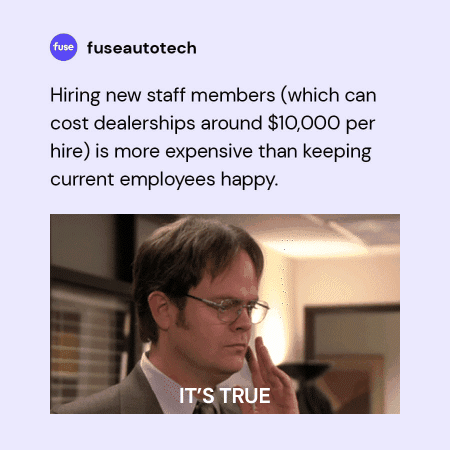
Just as securing a new customer costs more than retaining an existing one, hiring new staff members is more expensive than keeping current employees happy. In fact, according to a report from Hireology, onboarding a new staff member costs dealerships around $10,000 per hire.
Finding new employees who will be true assets to your business and boost revenue can be a labor-intensive process. From writing job descriptions, reviewing resumes, and conducting interviews to training new staff on sales procedures, there are numerous steps to go through. This time could be better spent on boosting productivity and driving revenue.
High turnover rates can also have a negative impact on the rest of the team’s morale and dynamics. As we’ll explore later on, collaboration across the dealership is an essential part of building a positive team culture.
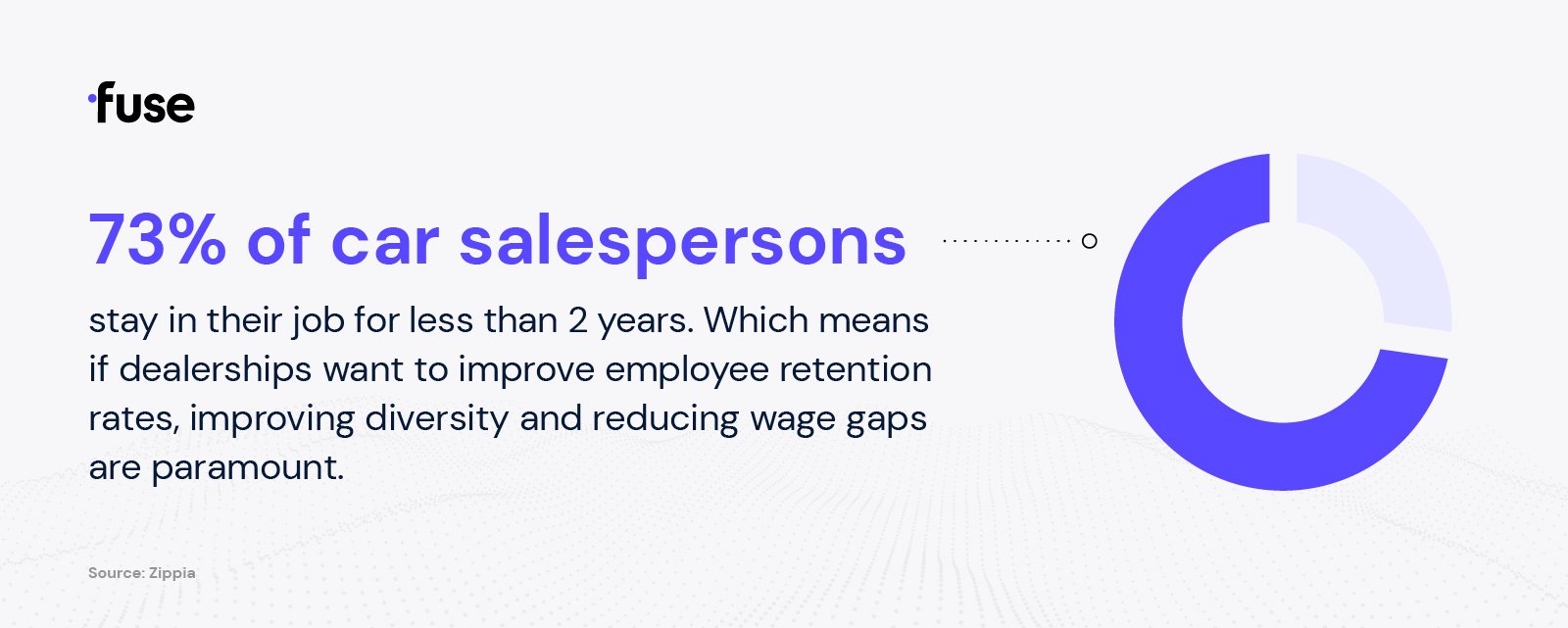 A Problem almost decades in the making
A Problem almost decades in the makingA 2016 NADA study indicated that staff retention in car dealerships has been declining steadily since 2011. In a four-year period, the median tenure for a car salesperson dropped from 3.8 to 2.4 years. This has continued to decline, with Zippia reporting that 73% of car salespersons stay in their job for less than two years.
One possible explanation for this trend is the lack of diversity and pay parity in the sector. Zippia’s statistics show that 76.1% of car salespeople are white, and it’s clear that employees of color earn significantly less than their white counterparts. At the same time, only 21.9% of US car sales representatives are female – a figure that has remained relatively constant since 2010, and women earn just 92¢ for every $1 earned by men.
If dealerships want to improve employee retention rates, improving diversity and reducing wage gaps are paramount.
It’s also important to recognize the role the changing sales landscape has played in staff retention levels. The way consumers buy cars has shifted significantly in recent years, thanks to the rise of digital retailing. While customers once had to rely on dealership salespeople for information about makes, models, and pricing, they can now find much of the information they need with only a few clicks of a mouse.
Salespeople who thrive on customer interaction may feel less fulfilled by their roles if they are unable to build strong relationships with visitors to the dealership. It’s worth considering how your dealership can harness automotive digital retailing solutions in tandem with hands-on customer relationship building.
Related Read - Single Point of Contact: 5 Benefits of SPOC for Dealerships
 How High Is the Employee Turnover Rate in the Retail Automotive Industry, Really?
How High Is the Employee Turnover Rate in the Retail Automotive Industry, Really?
As discussed, the retail automotive industry has seen an increase in annual employee turnover, reaching an all-time high of 46% in 2019. With the risk of labor shortages on the horizon, it’s vital to find dedicated employees, invest in solidifying their skill sets, and focus on creating a supportive, engaging workplace.
So, how can these issues be tackled? Here are some areas dealers can look into to improve staff retention rates and increase productivity.
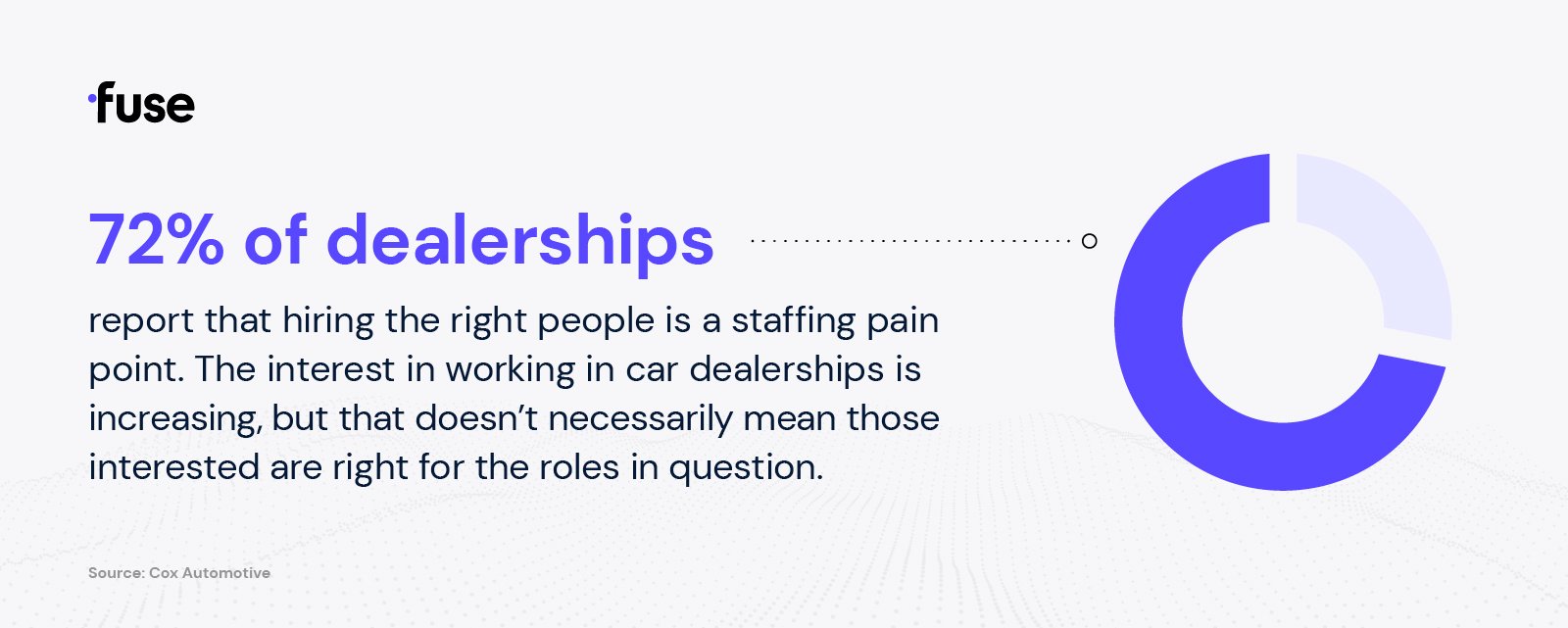
Reducing employee turnover can lower costs and improve profitability – but the first step is to hire the right people. According to the Cox 2021 Staffing Study, this is something 72% of dealerships report to be a top staffing problem. The good news is that the study indicates interest in working in car dealerships is increasing. The bad news is that that doesn’t necessarily mean those interested people are right for the roles in question.
How can you improve the quality of your hiring? A good starting point is to look at where you advertise your open positions – will those opportunities reach the right people? You also want to ensure your job descriptions authentically depict your dealership’s culture and are as accurate as possible.
A good rule of thumb is to seek out candidates who showcase:
Research shows that transparency in pay when advertising positions can have a significant impact on reducing, or even eradicating, the gender pay gap. It also helps applicants decide if the remunerations being offered are attractive to them. Indeed, many dealerships have wasted valuable time and resources interviewing candidates only for compensation to miss the mark for the ideal applicant.
Related Read - Innovation & Culture Change: Why Dealership Cultures Are Grown, Not Bought
Many traditional car dealerships use a commission-based model to pay their salespeople. However, removing commissions from the sales process can lead to higher employee satisfaction and lower turnover rates.
With a commission-based model, salespeople don't have foresight into how much they will earn each month. How much they earn also depends on which vehicles they sell and for how much, meaning it benefits your sales team members’ personal finances to focus on selling the most expensive cars to any and every customer on the lot. Selling costlier vehicles can increase dealer profitability, but losing customers due to pushy sales tactics does not.
Leveling the playing field with non-commissioned auto sales provides income stability for your sales staff while empowering them to sell more cars (vs. sell more expensive cars), thanks to a more comfortable customer buying experience.
That’s a major benefit of the one-price dealership pricing strategy: customers like it more. Happy customers buy cars and will refer more people to your dealership to do the same. At the same time, the single-price model is also more likely to appeal to non-traditional salespeople, leaving your dealership better positioned to attract more high-quality talent.
Customer service is, of course, critical when it comes to running a successful car dealership. And delivering excellent customer service starts with taking care of your employees. If they enjoy their work and feel motivated, they’ll provide a better service. Consider how you can encourage your team to focus more on meaningful work that drives sales and less on low-priority tasks that could be automated.
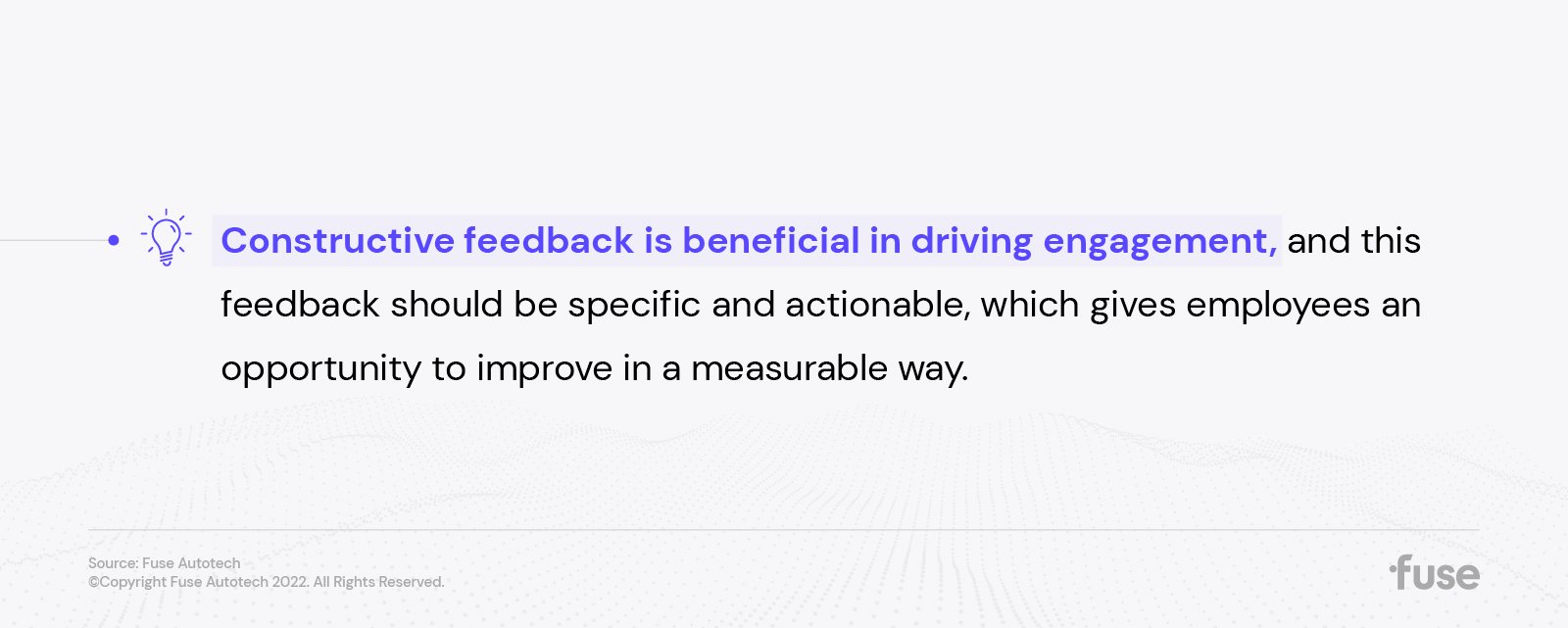
How can you ensure that your staff members are inspired to do their best? Firstly, do your employees know exactly what their responsibilities are? It’s important team members feel confident in their ability to complete their tasks well and receive praise for their efforts. Constructive feedback is also beneficial in driving engagement – this feedback should be specific and actionable, giving employees an opportunity to improve in a measurable way.
If they’re given new tasks or responsibilities, are they aware of any resources to support them? Offer training and education opportunities that show you’re willing to invest in your employees’ career development. Staff members who feel valued are more likely to stay loyal to your company and work more effectively.
It’s also essential to provide employees with adequate training on your processes so they can feel confident and able to work well when covering any staff absences.
Related Read - Dealership Operations & People Strategy: A Q&A with Candice Crane

A supportive work environment has been cited as the top driver of employee engagement, according to Cox Auto. A sense of support and collaboration should unite team members from across different departments – it’s important to remind employees that everyone is working towards the same business goals.
Silos can cause miscommunication that doesn’t just have a negative impact on staff but can also create friction with customers. Customers want continuity – both in communication and in the staff members they speak to. A high employee turnover rate can be a red flag to car buyers who may be less likely to return in the future.
Collaboration across the organization can also help foster a sense of belonging, which is likely to lead to increased staff happiness and loyalty.
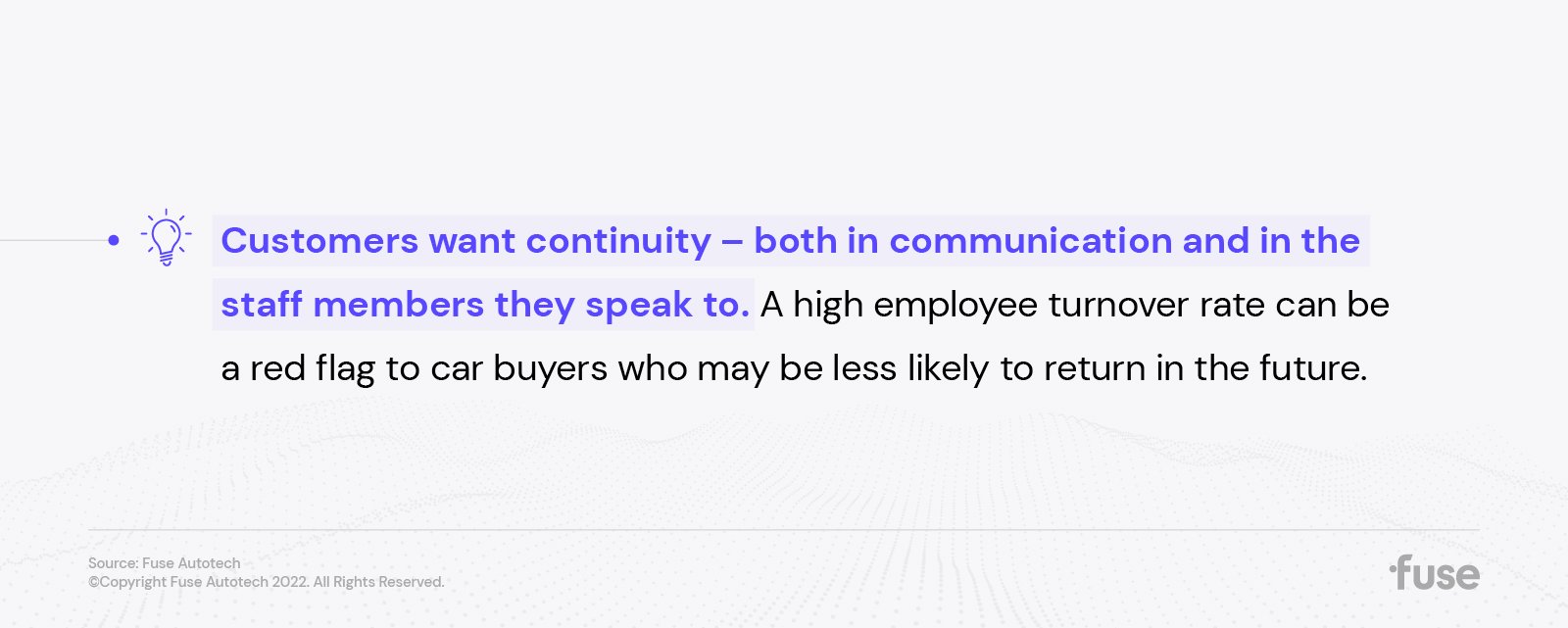
From improving the dealership digital retail process with dynamic payments to streamlining the desking of car deals, harnessing the right automotive retail software is one of the most effective steps you can take to improve productivity. But to improve employee retention, it takes organizational change. Luckily, Fuse dealer consulting services are here to support you in making key changes like moving to a single-price, single-point-of-contact sales model to develop a corporate culture resulting in a more effective, profitable, and enjoyable way to buy-and-sell cars.
Get in touch with Fuse today to learn how we’re helping dealers like you remove busywork and create more motivated salespeople.
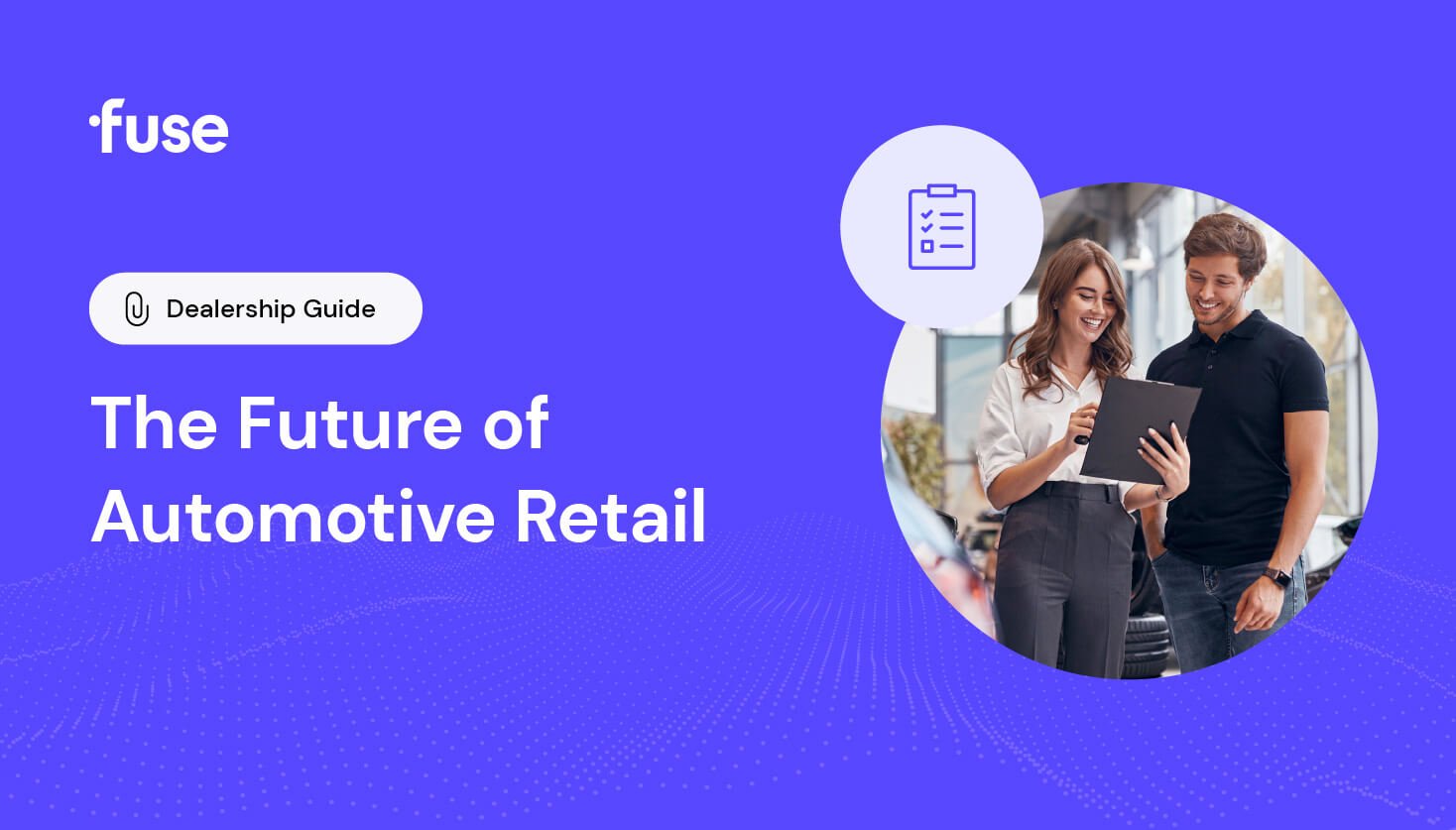
Today’s electric and hybrid cars appear nearly unrecognizable when compared to the first gas-powered car models created in the 1880s. The same cannot be said for the actual process of buying a...
News and Insights
10 min read
